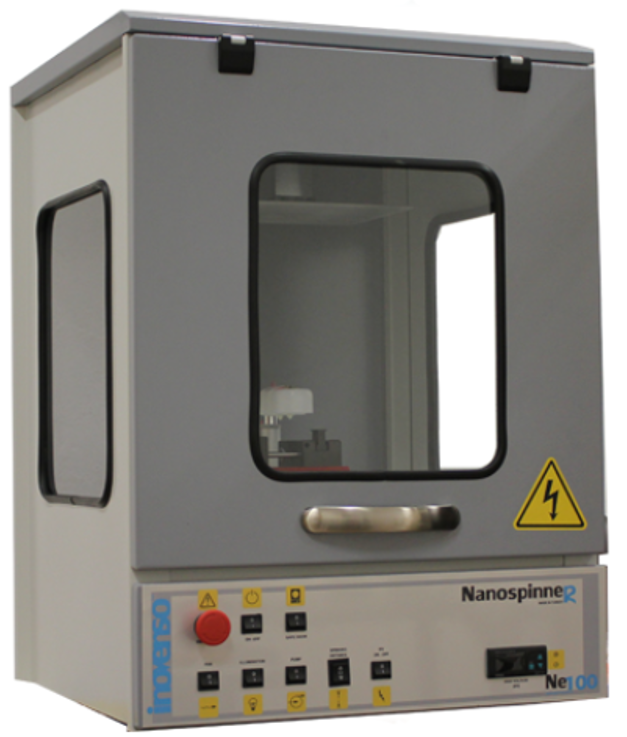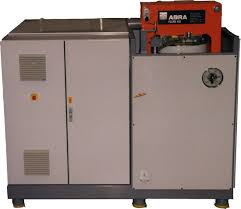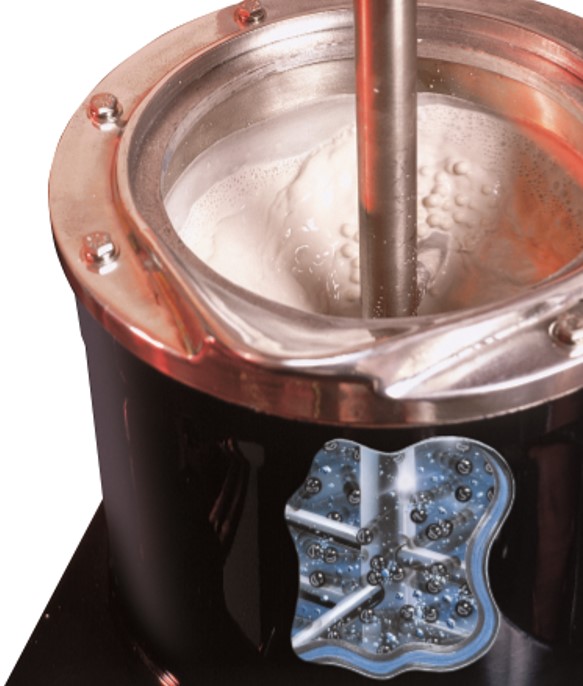CERAMICS & COMPOSITES
Ceramics & Composites
MFA, KFKI Campus, Building 26.
Contact: Katalin Balázsi, balazsi.katalin @ energia.mta.hu
INOVENSO NE100 Electrospinning/Electrospraying Machine
Electrospinning is a fiber production method which uses electric force to draw charged threads of polymer solutions or polymer melts up to fiber diameters in the order of some ten nanometers. Electrospinning shares characteristics of both electrospraying and conventional solution dry spinning of fibers. The process does not require the use of coagulation chemistry or high temperatures to produce solid threads from solution. This makes the process particularly suited to the production of fibers using large and complex molecules. Electrospinning from molten precursors is also practiced; this method ensures that no solvent can be carried over into the final product. The NE100 is a basic, single-nozzle electrospinning unit that lets you to do basic spinning on an easyplug round shape metal collector. It is designed for small-scale production of nanofiber mats and different coatings.

• Changeable collectors
• Co-Axial nozzle system
• Heat controlled chamber
• Humidity controlled chamber
• Camera integrated chamber
• Atmosphere controlled chamber
• Heating collector
• Vacuum holder collector
Parameters:
Voltage Range 0- 40 kV
Flow Rate 0.01-1000ml/h
Nozzle Inner Diameter 0.8 mm (0.31”)
Voltage Precision 100V
Voltage Display LED
Screen Max Current 0.75 mA
Hot Isostatic Pressing (HIP) – ABRA SHIRP 8/16-200-2000

Hot Isostatic Pressing is a heat treatment process which occurs by using high pressures (usually up to 2’000°C and 200 MPa pressure). In order to reach the required workpiece specifications the cast parts are heated in argon atmosphere with all side effective gas pressure and high temperatures beneath their flow limit, so that diffusion controlled creep processes set in and lead to densification. Through this process internal cavities and residual porosity are removed from cast or sintered workpieces. Also like this various materials in either solid or powder metallurgically form can be merged with each other or applied as coating. Powder metallurgically materials can be compressed down to their theoretical density. After this they show characteristics which could have never been reached in the usual melting metallurgical way.
Our Hot Isostatic Presses are available in the following sizes of working space:
• with a diameter range between 10 mm – 700 mm
• with an operating pressure range between 100 MPa (1’000 bar) – 200 MPa (2’000 bar)
• Interchangeable furnaces for several temperatures and atmospheres
• with a temperature range between 1’000°C – 2’000°C
ATTRITOR MILL
Union Process (Szegvari attritor mills)
The Attritor is often referred to generically as a “stirred ball mill." The operation of an Attritor is simple and effective. The material to be ground is placed in a stationary tank with the grinding media. Carbon steel, stainless steel, chrome steel, tungsten carbide, and ceramic balls are commonly used media. The material and media are then agitated by a shaft with arms, rotating at high speed. This causes the media to exert both shearing and impact forces on the material. The final result of this remarkably efficient process is an extremely fine material, measured in microns or fractions of microns, distributed on a very narrow curve. The laboratory Attritor works up to ten times faster than the conventional ball, pebble or jar mill. Its compact, vertical profile requires minimal space. No premixing is necessary. Adding ingredients (or taking samples) can be done at any time during the grinding.

Advantages:
• fast and efficient milling
• numerous options
• flexibility
• scale-up capability
• no premixing
• easy operation
Our attritors:
HD/HDDM 01 (3 pieces laboratory scale) 750 cm3 and 1400 cm3,
600 – 4000 rpm
– dry, wet and liquid nitrogen milling mods
DMQ 07 (industrial scale) continuous mod, 600 – 2000 rpm